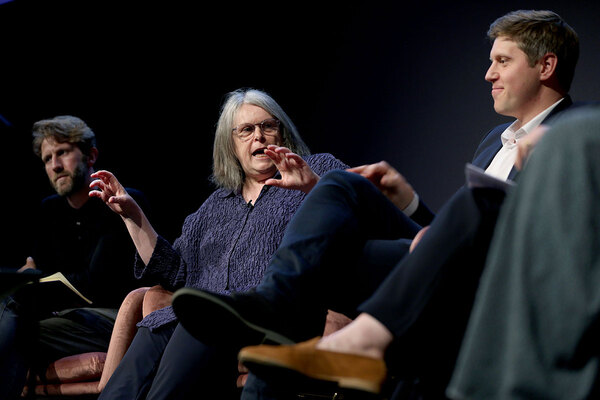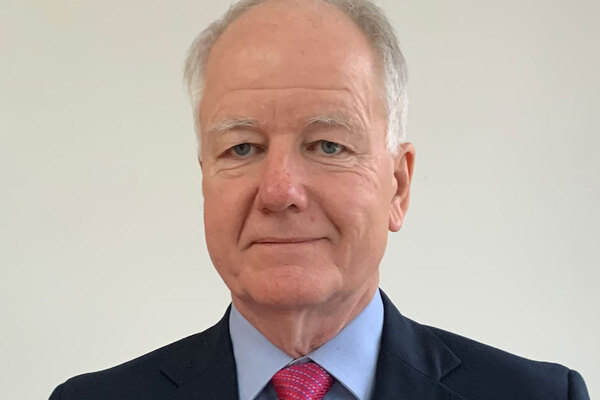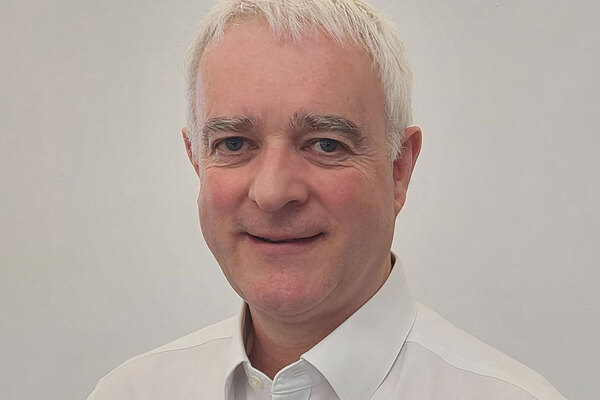You are viewing 1 of your 1 free articles
Inside Housing chief executive salary survey 2015
Where are the chief executives of the 180 biggest housing associations on the pay scale? Jess McCabe reports on Inside Housing’s most comprehensive salary survey yet
This year has seen an unprecedented spotlight fall on housing chiefs’ pay, with various national media commentators pointing out how it compares to the £142,500 the prime minister takes home for running the country. The Guardian produced a survey showing the gap between the highest and lowest pay in housing associations, and the regulator in England has also commented on senior pay and rewards.
Yet is this criticism really fair? Or, in a world in which housing associations are constantly being told to become more commercial and stretch their assets to deliver more homes, does it not actually reflect the pressures and additional demands placed on the modern chief executive?
To begin to answer this question, we must find out what chief executives are paid.
Click here to see a full, interactive version of the salary survey
Attention by national media has honed in on the highest paid chiefs. But in a sector of more than 1,700 housing associations, the top 10 biggest salaries represent a very particular size and scale of operation – and are not representative of the rest of the pack.
Housing associations are building more than ever – Inside Housing’s list of the 50 biggest builders found they had completed 40,213 in 2014/15, a 53% increase in one year. Some of the associations which paid their chief executives the 10 biggest salaries appear, not by coincidence, in the list of the associations who built the most last year, and many are also represented in the housing associations with the biggest pipelines. (On our full table of chief executive pay, we have highlighted the housing associations among the top 10 builders with a brick logo).
This year we wanted to tell a broader story of the chief executive pay scale. For this reason, we expanded the number of associations in our survey, from 100 housing associations to 180.
The difference is immediately apparent.
Undoubtedly, the scale of pay has increased again. Chief executives of the biggest 100 housing associations in the sector were paid an average of £182,780 this year, a 5.5% rise on last year’s average pay of £173,321. We calculate total pay by adding together basic salary, bonus and car allowance.
Basic pay among the biggest 100 associations averaged £170,004, meaning it rose also an inflation-busting 5.4%.
“If all your staff have been given a generous 3% rise, then how are you squaring the circle when only your chief executive has been given a 20% rise?”
Recruitment consultant
But the average total salary across all the 180 associations in our list this year is considerably lower – £157,628. Seven chief executives took home less than £100,000.
The difference between the lowest paid chief executive and the highest is big – but then so are the size and type of organisations they are running. It is not only a gap in salary, but in the operations being managed. The highest paying housing association has a turnover of more than £550m, with 140,882 homes. The lowest paying, has a turnover of not quite £20m, with 5,666 homes.
As housing associations, in particular large organisations, diversify into other businesses, comparisons to public sector pay may become less relevant as chiefs take on more risk.
Lowest pay per home owned and managed 2014/15
| Chief executive | Housing association | Pay/home | |
|---|---|---|---|
| 1 | Martin Armstrong | Wheatley Housing Group | £2.83 |
| 2 | David Bennett | Sanctuary Group | £3.23 |
| 3 | David Cowans | Places for People | £3.42 |
| 4 | Carol Matthews | Riverside | £3.48 |
| 5 | Mark Rogers | Circle | £3.69 |
| 6 | David Montague | L&Q | £3.75 |
| 7 | Mark Henderson | Home Group | £3.99 |
| 8 | Steve Close | Together Housing Group | £4.17 |
| 9 | Simon Dow | Guinness Partnership | £4.45 |
| 10 | Philip Gandy | Symphony Housing Group | £4.52 |
| Source: Inside Housing | |||
This is the argument made by Chris Phillips, chair of Places for People (PfP), which pays its chief executive David Cowans the highest total salary in the sector, at £481,507. “Places for People is a unique placemaking organisation, now comprising of 19 businesses, that has continued to diversify, grow and increase revenue over the last 12 months. More than half its turnover comes from businesses outside social housing,” he says.
To further hammer home the point, PfP supplied a breakdown of Mr Cowans’ salary, showing how much is attributable to ‘social housing’ (£330,292) and ‘non-social housing’ (£151,115) businesses. A similar point is made by the chair of Anchor, which has the second highest paid chief executive: as an organisation working in care, as well as housing, it is competing for executives in a different marketplace.
Highest paid housing association chief executives 2014/15
| Chief executive | Housing association | Total pay | Rise/fall | |
|---|---|---|---|---|
| 1 | David Cowans | Places for People | £481,507 | 11.20% |
| 2 | Jane Ashcroft* | Anchor | £356,982 | 7.40% |
| 3 | David Bennett | Sanctuary Group | £319,021 | 1.50% |
| 4 | Keith Exford** | Affinity Sutton | £300,706 | 4.00% |
| 5 | Simon Dow | Guinness Partnership | £269,000 | 1.90% |
| 6 | David Montague*** | L&Q | £268,800 | 22.10% |
| 7 | Darrell Mercer**** | A2 Dominion Group | £254,500 | 3.00% |
| 8 | Peter Walls | Gentoo Group | £241,356 | 5.70% |
| 9 | Mark Rogers | Circle | £239,109 | -1.20% |
| 10 | Steve White***** | Hyde Group | £229,058 | -4.80% |
| *Ms Ashcroft received an additional £60,094 in lieu of pension contribution | ||||
| **Mr Exford received an additional £14,156 in lieu of pension contribution | ||||
| ***Mr Montague received an additional £50,500 in lieu of pension contribution | ||||
| ****Mr Mercer received £17,300 in lieu of pension contribution | ||||
| *****Mr White was replaced by Elaine Bailey this financial yer, an she was paid £220,905 in total | ||||
Comparing sectors
This, of course, invites comparisons not with the prime minister, charities, or public sector leaders, but with the private sector. The highest paid FTSE chief last year took home almost £43m. Barratt Homes wrote a pay check for Mark Clare, its former chief executive, of more than £6m.
However, the juxtapositions are not always so outlandish. Jonathan Di-Stefano, chief executive of AIM-listed Telford Homes, took home £386,381 in 2014, making less than one chief executive of a housing associations. Telford’s most recently reported annual pre-tax profit of £25.1m was on a comparable footing to Places for People’s most recent surplus of £28m. Telford completed 375 homes, compared to PfP’s 792.
Pay is decided by the board of a housing association. Speaking anonymously, one recruitment consultant suggests some of the areas boards might want to pay most attention to. “Quite a few boards in our sector find this type of thing quite difficult,’ they say. “There’s not a sufficient debate.
Lowest pay per £m of turnover
| Chief executive | Housing association | Total pay/£m of turnover | |
|---|---|---|---|
| 1 | David Montague | L&Q | £419 |
| 2 | David Bennett | Sanctuary Group | £511 |
| 3 | Carol Matthews | Riverside | £573 |
| 4 | Kate Davies | Notting Hill Housing | £577 |
| 5 | Mark Rogers | Circle | £581 |
| 6 | Mark Henderson | Home Group | £650 |
| 7 | Keith Exford | Affinity Sutton | £699 |
| 8 | Steve White* | Hyde Group | £703 |
| 9 | Simon Dow | Guinness Partnership | £769 |
| 10 | Neil Hadden | Genesis | £776 |
| *Mr White was replaced by Elaine Bailey this financial year. Source: Inside Housing | |||
“If all your staff have been given a generous 3% rise, then how are you squaring the circle when only your chief executive has been given a 20% rise. What was the quality of debate that was had at board level?”
Another worry, the consultant told Inside Housing, is that the scope of that debate is limited merely to benchmarking chief executive pay against other housing chiefs. Any threat to the organisation’s reputation from pay is not necessarily part of the remit of the remuneration committee.
“I could not justify giving Steve a salary increase when the staff don’t have one.”
Bernadette Conroy, chair, Poplar Harca
The practice can risk wage inflation without any link to performance or to other staff.
A spokesperson for Notting Hill Housing (NHH) explains how it decided on a rise of 18.7% in its chief executive’s total pay: “Notting Hill Housing operates a market median pay system for all staff, including the chief executive. Where staff are paid below this we make an upward adjustment to make sure we are paying in line with the market. The chief executive’s pay is not linked to the level of NHH’s surplus.”
Some boards are having critical conversations about the reputational risks of high pay, in relation both to tenants’ income and to staff salaries. Poplar Harca, for example, reduced the total pay for its chief executive Steve Stride this year (in the form of a cut to car allowance, his salary and bonus stayed roughly the same). Bernadette Conroy, the association’s chair, tells Inside Housing: “I could not justify giving Steve a salary increase when the staff don’t have one. We are about fairness.”
The sector knows there is external interest in the topic of pay. We know, however, that many are running increasingly large and complicated organisations. Given their bracing treatment over the last year, they need to concentrate on explaining these facts clearly and concisely.
Housing association chief executives will be delivering tens of thousands of new homes and are crucial in tackling the current housing crisis. Now, more than ever, they should not shy away from explaining why they are worth it.
Highest and lowest paid
David Cowans was the highest paid again this year, taking home £481,507.
The gap between Mr Cowans and the next highest paid chief executive, Jane Ashcroft, is more than £100,000 (see table). Our list of the highest paid chiefs is populated by the same organisations as in the last few years. However, when we look at the other end of the spectrum, we see a lot of change.
Highest pay per home owned/managed
| Chief executive | Housing association | Pay/home | |
|---|---|---|---|
| 1 | Mike Brown | BDHT | £34.83 |
| 2 | Mark Gardner | Melin | £32.64 |
| 3 | David Renwick | Ocean Housing | £32.63 |
| 4 | Grahame Hindes | Octavia Housing | £30.94 |
| 5 | Sue Chalkley | Hastoe | £30.06 |
| 6 | John Giesen | B3 Living | £29.58 |
| 7 | David Bogle | Hightown Housing Association | £28.98 |
| 8 | Elspeth Mackenzie | Thrive Homes | £28.67 |
| 9 | Paul Doe | Shepherds Bush Housing Group | £27.68 |
| 10 | Clare McCarty | Clanmil Housing Association | £27.63 |
| Source: Inside Housing | |||
The lowest paid chief executive this year was Julia Mulloy, chief executive of Scottish Borders Housing Association. She received £85,839 in total.
A spokesperson for the 5,666-home association explains: “We take our guidance for remuneration from the Scottish Housing Regulator’s remuneration regulatory standard.”
In England, the Homes and Communities Agency might have made noises about chief executive pay, but Scotland’s regulator has intervened. Perhaps then it is not surprising that the second lowest paid chief is also from a Scottish association, Shona Stephen of 4,217-home Queens Cross Housing Association, who received £95,036.
Like all the housing associations that Inside Housing spoke to, Queens Cross has a remuneration committee which reviews and sets its chief executive’s salary, based on benchmarks of what her peers are paid. Margaret Glass, chair of the Glasgow association’s board, adds: “In determining the salary level, the committee is also mindful of what is appropriate for a community-based housing association.”
It is obviously the case that smaller organisations tend to pay their chief executives less. But it is worth noting that Wheatley Group, Scotland’s largest housing association, pays Martin Armstrong £2.83 for each of its 78,000 homes, making him the best-value chief executive defined by this measure.
On the flipside, the breakdown of the 10 highest paid chief executives per £1m of turnover, and per home, is entirely taken up by smaller housing associations.
Big risers
| Chief executive | Housing association | Rise | |
|---|---|---|---|
| 1 | Bruce Moore* | Housing & Care 21 | 76.40% |
| 2 | Kevin Bolt** | BPHA | 29.80% |
| 3 | David Montague | L&Q | 22.10% |
| 4 | Kate Davies | Notting Hill Housing | 18.70% |
| 5 | Linda Adair Whittaker | NPT Homes | 15.40% |
| 6 | Keith Loraine | Isos Housing Group | 13.50% |
| 7 | Rob Young | Helena Partnerships | 12.80% |
| 8 | John Synnuck | Swan Housing Association | 12.40% |
| 9 | Steve Coffey | Liverpool Mutual Homes | 12.20% |
| 10 | Alison Thain*** | Thirteen Group | 11.68% |
| *Mr Moore’s salary is compared to his predecessor Pushpa Raguvaran. His own salary would have stayed constant year-on-year. **Mr Bolt’s salary is also compared to his predecessor. *** Ms Thain’s salary rise reflects the creation of Thirteen Group, and compares her salary at Fabrick to her salary at the merged organisation Thirteen. Source: Inside Housing | |||
In another year of pay inflation across the sector, 18 chief executives benefitted from an increase in total pay of more than 10%. But many of the biggest rises are not as dramatic as first appears.
Bruce Moore, chief executive of Housing & Care 21, posted the biggest absolute rise in total pay this year. He took home £224,000 in 2014/15. In other words, 76% more than the £127,000 that the 18,818-home paid former chief executive Pushpa Raguvaran.
The change in personnel at the top of Housing & Care 21 may be skewing this dramatic change. Still, even if you compare Mr Moore’s total salary with Ms Raguvaran’s earnings in 2012/13, of £188,124, the association has reported a steep increase in salary.
BPHA’s 29.8% increase in chief executive pay is also due to a change in staffing, as 2014/15 was the first full year of Kevin Bolt’s tenure as chief executive, taking over from John Cross. The difference in pay could be seen as startling, but it is almost entirely due to the fact that Mr Cross left part way through the 2013/14 year, and therefore was not eligible for a bonus.
A fairer comparison looks at basic annual salary: Mr Cross would have been paid £136,000 if he had worked the whole financial year. Mr Bolt was paid £162,000 – this includes a fee for one month’s consultancy work before he took over.
Highest pay per £m of turnover
| Chief executive | Housing association | Total pay/£m turnover | |
|---|---|---|---|
| 1 | Mike Brown | BDHT | £7,042 |
| 2 | Anthony Duerden | Calico Group | £5,878 |
| 3 | Dave Power | City South | £5,751 |
| 4 | John Giesen | B3 Living | £5,553 |
| 5 | John Archibald | Victory Housing Trust | £5,463 |
| 6 | Elspeth Mackenzie | Thrive Homes | £5,234 |
| 7 | Clare McCarty* | Clanmil Housing Association | £5,202 |
| 8 | Robert Tamburrini | NG Homes | £5,132 |
| 9 | Shaun Tymon | Yorkshire Coast Homes | £5,128 |
| 10 | Sarah Boden | Severnside | £5,079 |
| *Figures drawn from financial report. Source: Inside Housing | |||
In other cases, a pay increase can represent a correction. Linda Adair Whittaker, chief executive of NPT Homes, had a salary increase of over 15%. Last year, she was the lowest paid of the biggest 100 housing associations. In our extended table of 180 chief executives, her pay this year of £120,000, with no bonus or car allowance, continues to place her in the modest position of 147th highest paid chief executive.
Some chief executives saw a decrease in pay. Just like the biggest increases, the biggest decreases are largely down to changing chief executives. Sheila Doran, the outgoing chief executive of Eastland Homes, is one such case, with a reduction of almost 20%.
However, again, this figure is skewed because Ms Doran worked a four-day week in the year before her retirement. She was replaced by Dave Williams, an internal hire who was the association’s director of property services. He was paid £101,186.
Howard Toplis took over Greensquare from David Ashmore with a 14% reduction in total pay. This was because Mr Ashmore received a bonus in 2013/14, but Mr Toplis did not in 2014/15. His basic pay was a touch higher than Mr Ashmore’s.
Bonuses
Bonuses, for those chief executives who earned them, also rose. As Inside Housing reported last week, bonuses for chiefs of the biggest 100 housing associations rose 4.7%, from £16,737 last year, to £17,519 in 2014/15.
Fifty associations paid a bonus. Most were in the biggest 100 associations, but our list revealed performance-related pay is not unheard of in smaller organisations too. Twenty associations outside the biggest 100 paid a bonus.
As in previous years, many housing associations simply do not operate a performance-related pay scheme. A small number had cancelled their scheme since last year. Victory Housing, a new entrant, mentioned it has made this decision. “It was felt a performance bonus structure was no longer appropriate for the organisation as a whole,” a spokesperson says.
In total, housing associations gave out just under £700,000 in bonuses.
Gender gap
Only 45 out of 180 chief executives are women, or 25%. This compares to the 22% of female chief executives in last year’s survey of 100 housing associations.
However, the small increase in the pool of women in the survey was accompanied by a decrease in average salaries.
Notably, female chief executives took home four out of the 10 lowest salaries.
Last year, Sue Manning, director of human resources at Capita, told us of the underrepresentation of women in top jobs: “It’s going to change. I’m confident.”
This was based on the idea that more women are chief executives of smaller associations, and talent was simply waiting to rise up the ranks.
But the low proportion of women in the top 180 suggests this may not happen soon.
Notably, the average pay for a female chief executive continues to trail male chief executives. On average, women with the top job in a housing association were paid just £147,634.
Only 13 women received a bonus, and the average for their performance-related pay was £11,100, well below the average for all chief executives.
Many of these are new entries to the salary survey.
But for those social landlords for which Inside Housing has year-on-year figures, we calculate the average pay increase for a female chief executive was only 3.9%.
It trails by 14% the increase in average salaries of 4.5% for organisations headed up by men where we have two years of figures.
Comparing these figures must be done with caution because on some occasions a female chief executive has replaced a male chief, or vice versa.
Pensions
| Chief executive | Housing association | *Employer’s contribution | Basic salary | Employer’s pension contribution | |
|---|---|---|---|---|---|
| 1 | Jane Ashcroft** | Anchor | 30.00% | £300,478 | £90,143 |
| 2 | Bob Strachan*** | Stonewater (formerly Jephson and Raglan) | 28.70% | £159,407 | £45,750 |
| 3 | Andy Orrey | North Lincolnshire Homes (Ongo) | 28.30% | £126,128 | £35,694 |
| 4 | Mark Rogers | Circle | 27.50% | £230,345 | £63,345 |
| 5 | Tony Bramley | Shoreline Housing Partnership | 24.00% | £104,932 | £25,184 |
| 6 | Karen Mayhew**** | Havebury Housing Partnerships | 23.40% | £112,750 | £26,384 |
| 7 | Tom Dacey | Southern Housing Group | 22.90% | £198,420 | £45,475 |
| 8 | David Renwick | Ocean Housing | 22.00% | £136,058 | £29,933 |
| 9 | Brian Logan | Bield | 21.70% | £93,950 | £20,368 |
| 10 | Ron Dougan | Trent & Dove | 21.60% | £102,445 | £22,128 |
| *Employer’s contribution to chief executive’s pension (or payment in lieu of a pension contribution) as a percentage of basic salary 2014/15 | |||||
| **Anchor made a 10% contribution to Ms Ashcroft’s pension, and she took another 20%, or £60,094, as cash | |||||
| ***Stonewater pays an employer contribution of 9.4% plus an enhanced pension of 19.3% | |||||
| ****From October 2014, Ms Mayhew took a payment in lieu of pension contributions at the same rate | |||||
This year, 12 chief executives took a cash payment in lieu of part or all of their contribution to their pension scheme.
Some of these payments are generous additions to take-home pay, with Jane Ashcroft, chief executive of Anchor, taking home an additional £60,000, while the association still contributed about £30,000 to her defined contribution pension pot.
Pensions consultants say this is most likely due to chief executives reaching their ‘lifetime allowance’ for the size of their pension pots, after which the tax treatment makes it unfavourable to build up a bigger pension. The point at which tax starts to disincentivise further contributions is when the pot reaches £1.25m this year.
The average pension contribution among those who received one was 13.2%, but the percentages ranged from 31.2% to 1.8%. Alan Collins, director at pensions consultancy Spence & Partners, says: “It doesn’t surprise me there’s a broad range.”
For comparison purposes, across the UK, the average employer contribution to staff pensions was 6.1% in 2013, the last year that figures are available from the Office for National Statistics (ONS).
All but 36 chief executives are on ‘defined benefit’ schemes, in which retirement income is guaranteed.
However, housing associations continued to shift away from the most generous type of pension – a defined benefit plan which guarantees retirees an income based on their final salary. Fifty-four associations are now contributing to a ‘career average’ pension on their chief executive’s behalf, with many switching from defined benefit this year or last year. The ONS says that pension contributions may be rising in order to offset deficits in these schemes.
A small handful of chief executives had no pension contributions at all this year. However, caution is needed in interpreting these 0% contributions. Rod Cahill, for example, chief executive of 21,350-home Catalyst Housing, had no money added to his pension. But the association explained this is because he has exceeded the lifetime allowance pot. His total salary rose 8.0%, at least in part because his basic pay was increased to compensate for a lack of pension contributions.
An unusually large proportion of respondents declined to tell Inside Housing the details of their chief executives’ pension scheme, even though this is information disclosed in their annual accounts.
Methodology
Inside Housing sent the salary survey questions out to around 220 of the biggest housing associations in the UK. Due to flaws in the dataset, replication, and mergers and acquisitions, we whittled this down to 181 organisations.
Organisations were given a chance to check the data about their chief executive before publication.
Where a chief executive changed during the year, we included annualised figures for the outgoing chief executive.
UPDATE: 11.09.2015
This article originally stated that Derwentside Homes contributed 31.2% to its chief executive Geraldine Kay’s pension. This was incorrect, as 31.2% is the total contribution by Ms Kay and her employer to the pension. The employer’s contribution is in fact 14.4%
21.09.2015
This article originally stated that Michael McDonnell, chief executive of Helm Housing Association had a pay rise of 12.1%. However, Mr McDonnell worked only 10 months of 2013/14 as chief executive of Helm, and therefore this gives the wrong impression. Annualised, his salary remained the same at about £95,000. This was based on an error in comparing actual pay, rather than annualised pay.












